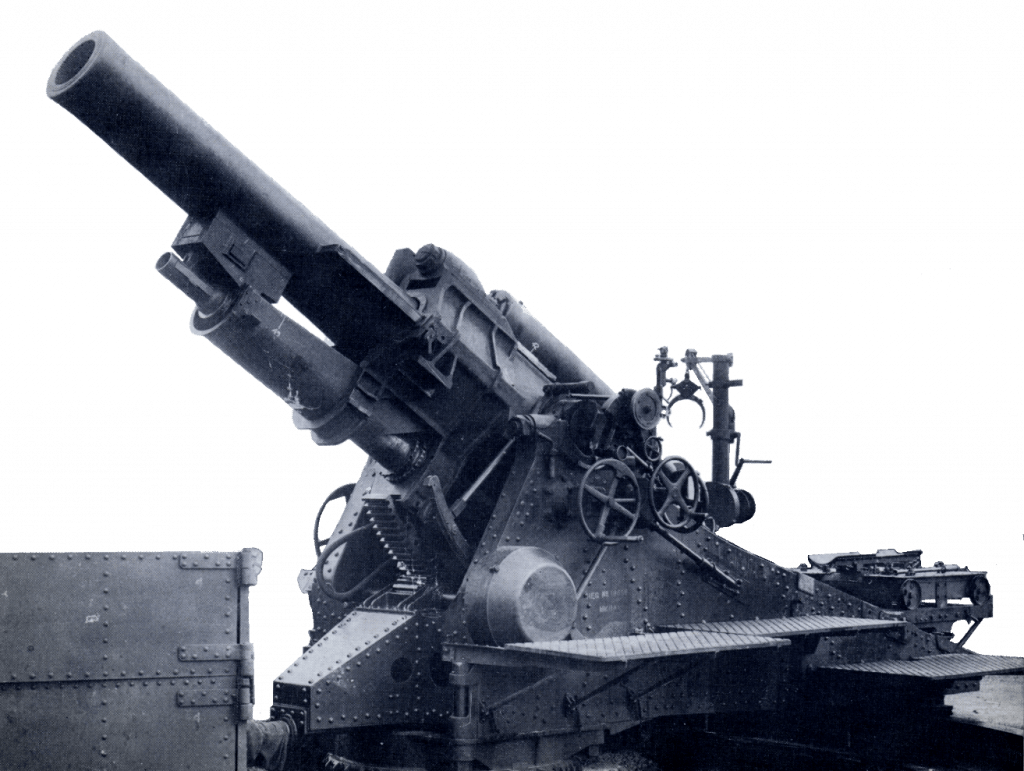
The 12 inch Howitzer was first introduced in 1917. It was mostly an enlarged version of the 9.2 inch Mark 2 using a similar siege mounting. It was moved in six loads drawn by traction engines or Holt caterpillar tractors. It was no wonder the troops called it the “12 inch Road Hog”. It was provided with a power rammer which was probably the first ever used on a field equipment.
Those guns still remaining in WW2 were deployed in 1940 in anti-invasion positions. In 1943 a “Siege Train” was proposed and an anti-concrete shell designed. The idea was dropped and the shells never produced. The 12 inch Howitzer was declared obsolete in March 1945.
Data
| Weight of Gun & Breech Mechanism | 20,440 lbs |
| Total Length | 222.35 inches |
| Length of Bore | 207.6 inches (17.3 calibres) |
| Rifling | 60 grooves, uniform right hand 1/20 |
| Breech Mechanism | Asbury interrupted screw, percussion fired |
| Elevation | +20° to +65° (loading angle +3½º hand, +19½º hydraulic) |
| Traverse | 30° right & left |
| Recoil System | Hydropneumatic constant, 50 inches |
| Weight in Action | 37½ tons plus 20 tons of earth in front box |
Performance
Firing standard 750 lb HE Shell
| Muzzle velocity | 1,468 feet per second |
| Maximum range | 14,350 yards |
Ammunition
| Shell, HE Mark 10 | Nose fuzed, non-streamlined. Percussion Fuze No. 106 or No. 106E |
| Shell, Common Pointed Mark 1A | Non-streamlined, pointed with base Percussion Fuze No. 16. For hard targets |
| Shell, Concrete Piercing Mark 1 | The requirement lapsed and it never entered production |
| Propelling Charge | 2 distinct assemblies. Short Range Portion – charges 1 to 6. Long Range Portion – charges 7 to 11. |
